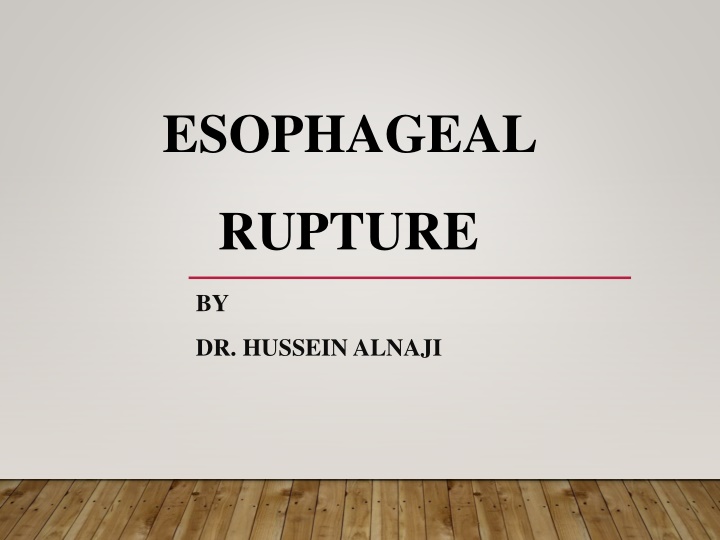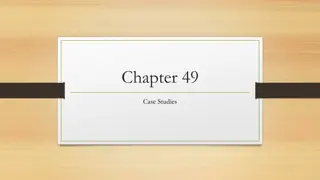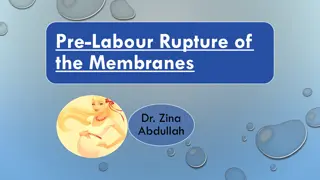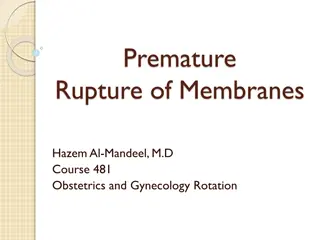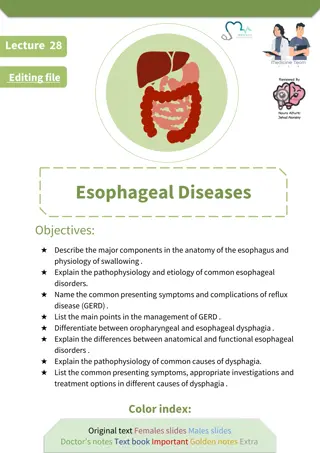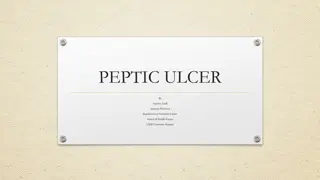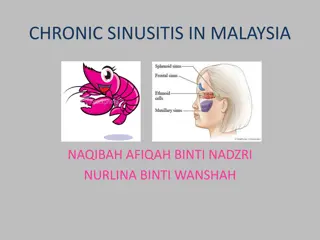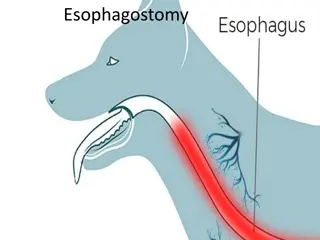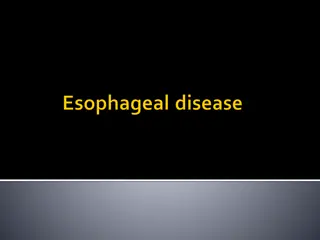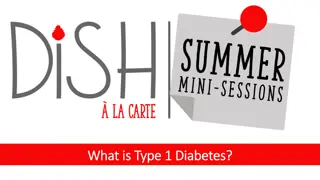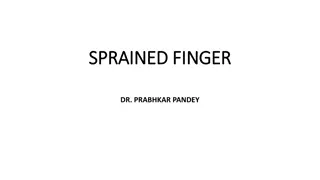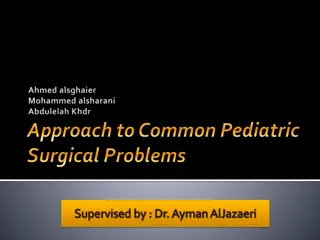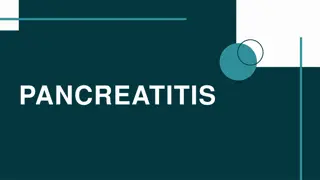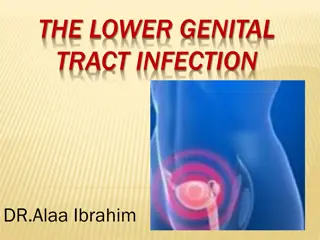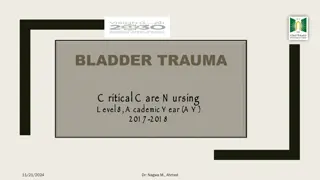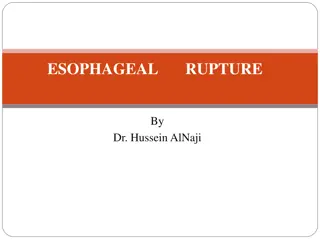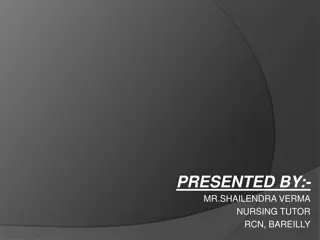Esophageal Rupture: Causes, Symptoms, and Treatment
Esophageal rupture, a serious condition resulting from various factors like trauma or foreign body ingestion, presents with distinct clinical findings and requires prompt and appropriate treatment to prevent complications.
Uploaded on Apr 15, 2025 | 2 Views
Download Presentation

Please find below an Image/Link to download the presentation.
The content on the website is provided AS IS for your information and personal use only. It may not be sold, licensed, or shared on other websites without obtaining consent from the author.If you encounter any issues during the download, it is possible that the publisher has removed the file from their server.
You are allowed to download the files provided on this website for personal or commercial use, subject to the condition that they are used lawfully. All files are the property of their respective owners.
The content on the website is provided AS IS for your information and personal use only. It may not be sold, licensed, or shared on other websites without obtaining consent from the author.
E N D
Presentation Transcript
ESOPHAGEAL RUPTURE BY DR. HUSSEIN ALNAJI
ETIOLOGY 1. localized ischemia and necrosis secondary to foreign bodies. 2. External trauma, nasogastric intubation. 3. Perforation of ulcers in horses and cattle. 4. Death of Hypoderma lineatum larvae in cattle. 5. Spontaneous rupture can occur in horses with idiopathic muscular hypertrophy of the esophagus. 6. The administration of sustained-release anthelmintic boluses to young calves not large enough for the size of the bolus used can cause esophageal injury and perforation.
PATHOGENESIS Traumatic injury to the esophagus edema, hemorrhage, laceration of the mucosa Possible perforation of the esophagus resulting in periesophageal cellulitis Perforation of the thoracic esophagus caused fatal pleuritis spreads proximally and distally along the esophagus severe toxemia, and dysphagia can cause aspiration pneumonia. extensive edema and accumulation of swallowed or regurgitated ingesta along with gas.
CLINICAL FINDINGS 1. In the acute injury of the esophagus, there is salivation and attempts to swallow, which cause severe pain, particularly in horses. 2. In some cases, attempts at swallowing are followed by regurgitation and coughing, pain, retching activities, and vigorous contractions of the cervical and abdominal muscles. 3. Marked drooling of saliva, grinding of the teeth, coughing, and profuse nasal discharge are common in the horse with esophageal trauma with complications following nasogastric intubation.
4- Regurgitation can occur and the regurgitus contains mucus and some fresh blood. 5- If the esophageal rupture is in the cervical region, palpation in the jugular furrow causes pain and edematous tissues around the esophagus can be palpable. CLINICAL PATHOLOGY There is often hematological evidence of inflammation, dehydration, metabolic alkalosis, and toxemia.
DIFFERENTIAL DIAGNOSIS 1. Tracheal laceration and subcutaneous emphysema 2. Skin wounds over the axilla with subsequent subcutaneous emphysema. 3. Severe guttural pouch empyema. 4. Clostridial myositis secondary to puncture wounds of the neck or cervical intramuscular injections. 5. Pharyngeal phlegmon in cattle
TREATMENT 1. Treatment involves effective drainage of the site over the esophageal perforation. 2. prevention of further contamination, control of infection and inflammation, and provision of water and food. 3. Surgical treatment involves fasciotomy to provide drainage and access to the perforated esophagus. 4. A stomach tube, of similar size as that used to perform nasogastric intubation on the animal (14 20 mm). 5. Broad-spectrum antimicrobials and tetanus prophylaxis should be administered. Pain and swelling can be controlled by administration of NSAIDs.
